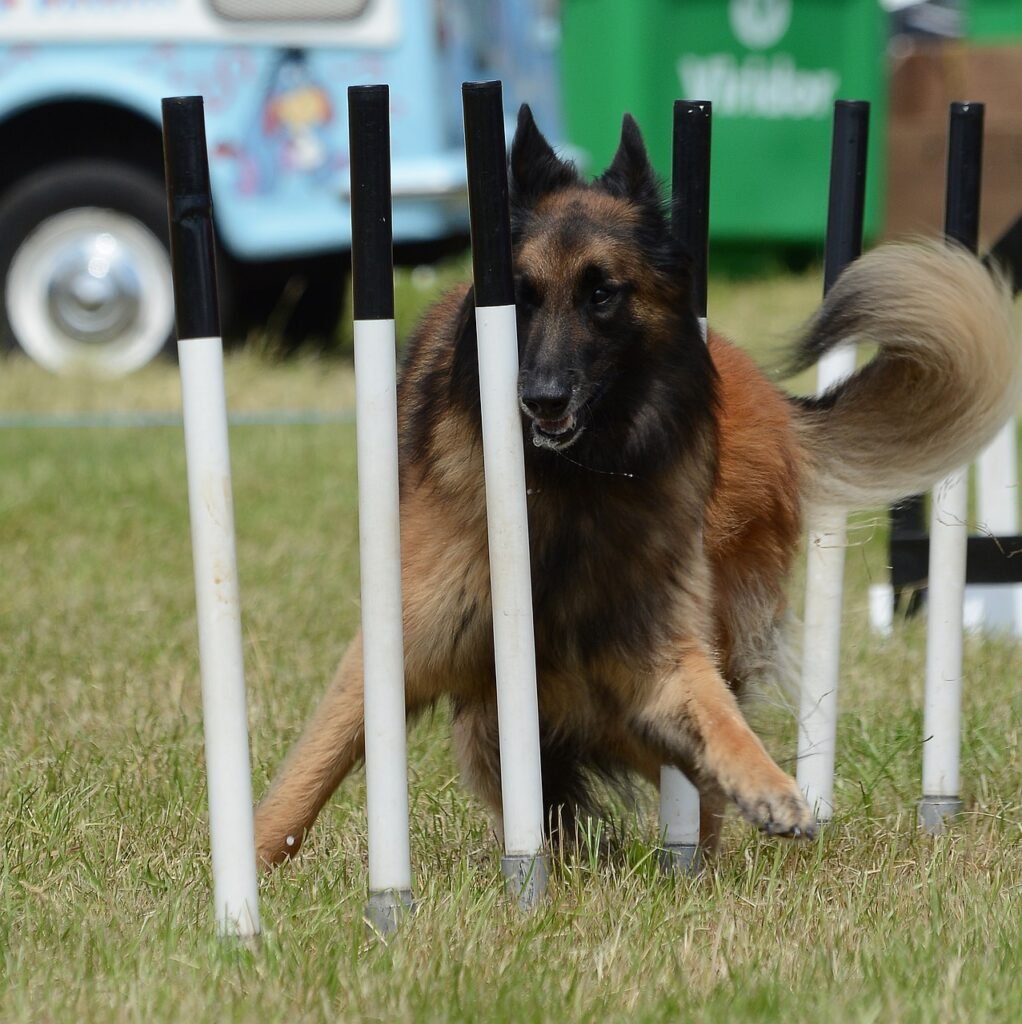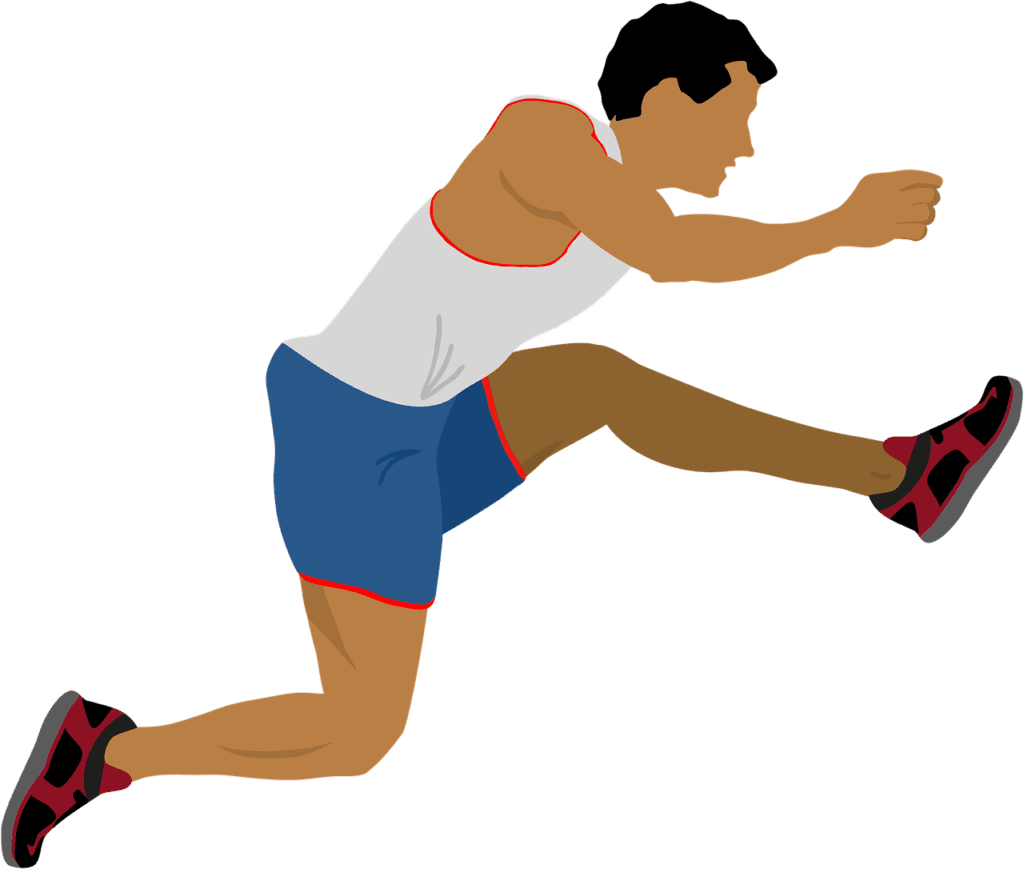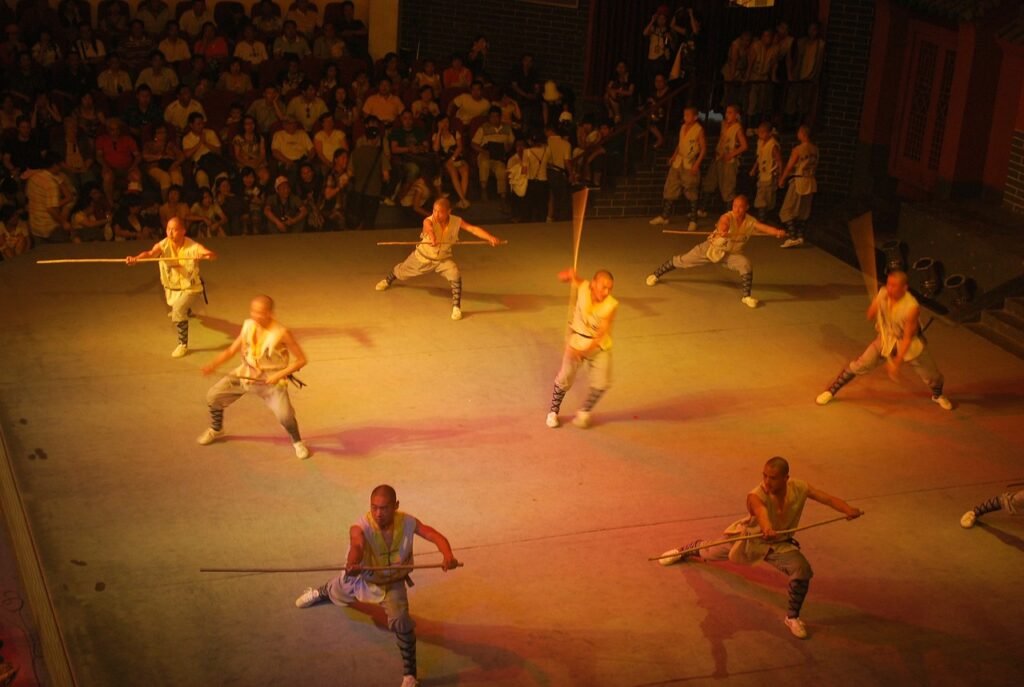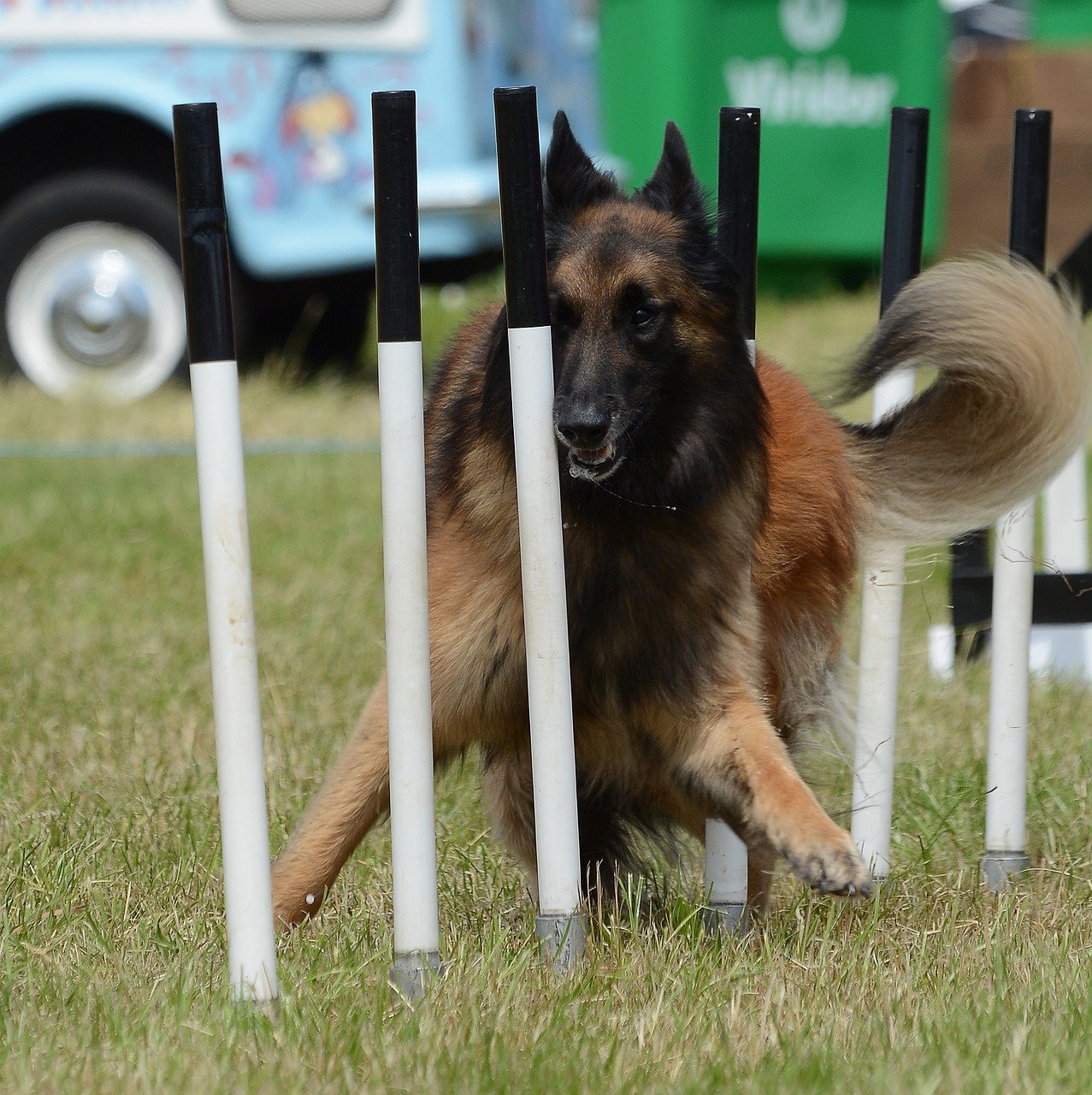In the world of sports, agility and quick reflexes are key to outmaneuvering your opponents. Whether you’re playing basketball or soccer, developing unpredictable footwork can give you a competitive edge. By constantly challenging and pushing your body’s limits, you can enhance your ability to change direction quickly, confuse your opponents, and ultimately gain an advantage on the field. In this article, we will explore various techniques and exercises that will help you develop agile and unpredictable footwork, improving your performance in any sport. So get ready to take your game to the next level as we delve into the exciting world of developing unpredictable footwork.

Understanding the Importance of Footwork
Definition of footwork
Footwork refers to the movement and positioning of the feet in various sports and physical activities. It is a fundamental aspect of athletic performance, as it contributes significantly to agility, balance, speed, and overall coordination. By mastering footwork techniques, athletes can gain a competitive edge, enhance their performance, and reduce the risk of injury.
Role of footwork in sports
Footwork plays a crucial role in almost every sport, including basketball, soccer, tennis, martial arts, and many others. It is responsible for initiating movements such as running, jumping, pivoting, and changing direction. Efficient footwork enables athletes to generate power, maintain stability, and react quickly to unpredictable situations on the field or court. It also improves body control, allowing athletes to execute precise movements and maintain balance while performing complex maneuvers.
Advantages of unpredictable footwork
Unpredictable footwork refers to the ability to quickly and creatively move the feet in unexpected ways, often catching opponents off guard. This skill is particularly valuable in sports that involve direct competition, such as basketball, football, and boxing. Unpredictability makes it challenging for opponents to anticipate an athlete’s next move, giving the athlete a strategic advantage. It allows athletes to create scoring opportunities, evade opponents, and maintain control over the game. Moreover, unpredictable footwork keeps opponents guessing, increases the difficulty of defending against an athlete, and enhances the overall entertainment value of the sport.
Analyzing Basic Footwork Techniques
Importance of proper stance
A proper stance serves as the foundation of effective footwork. It provides athletes with a stable base from which they can generate power and execute movements efficiently. The correct stance varies depending on the sport, but generally involves a balanced distribution of weight on both feet, knees slightly flexed, and the body’s center of gravity positioned low. Maintaining a proper stance allows athletes to respond quickly to changing situations, adjust their footwork as needed, and ensure optimal stability and control.
Different types of footwork techniques
Various sports require specific footwork techniques tailored to their unique demands. For example, in basketball, players utilize techniques such as the crossover step, drop step, and jab step to create space, evade defenders, and make accurate passes. Soccer players, on the other hand, employ techniques such as the inside cut, outside cut, and drag-back to change direction quickly, beat opponents, and maintain control of the ball. Understanding and practicing these techniques is essential for athletes to excel in their respective sports and maximize their performance potential.
Drills for improving basic footwork
To enhance basic footwork skills, athletes can engage in specific drills that target different aspects of footwork. For agility and coordination, ladder drills, cone drills, and shuttle runs are highly effective. These drills involve precise foot placement, rapid changes of direction, and accelerating or decelerating quickly. To improve balance and stability, exercises such as single-leg stands, Bosu ball training, and proprioceptive exercises can be incorporated. These drills challenge athletes to maintain balance while performing dynamic movements, mimicking the unpredictable scenarios they may encounter during sports competitions.
Enhancing Agility and Quickness
The relationship between footwork, agility, and quickness
Footwork, agility, and quickness are interconnected and mutually dependent on each other. Agile footwork allows athletes to change direction, evade opponents, and maintain control, while quickness refers to the ability to move the feet rapidly and explosively. Together, footwork, agility, and quickness enable athletes to perform dynamic movements with precision, speed, and efficiency. By improving footwork techniques, athletes can develop greater agility and quickness, enabling them to excel in fast-paced and unpredictable sports environments.
Exercises for developing agility
Agility exercises focus on improving an athlete’s ability to change direction quickly while maintaining control and balance. Cone drills, ladder drills, and shuttle runs are excellent examples of agility exercises. These drills require athletes to navigate obstacles, decelerate, accelerate, and make rapid changes of direction. Additionally, incorporating reactive drills, such as agility ladder drills with light taps or partner mirror drills, can enhance an athlete’s reaction time and footwork coordination.
Exercises for improving quickness
Quickness exercises aim to enhance an athlete’s ability to move their feet rapidly and explosively. Plyometric exercises, such as box jumps, depth jumps, and lateral hops, help develop fast-twitch muscle fibers and improve the speed at which an athlete can contract their muscles. Sprints, shuttle runs, and ladder drills performed at maximum speed also contribute to the development of quickness. By consistently incorporating these exercises into training routines, athletes can significantly improve their footwork speed and explosiveness.
Incorporating Fakes and Feints
Understanding fakes and feints
Fakes and feints are deceptive movements performed to mislead opponents and create advantageous situations. Fakes involve executing a movement that suggests a particular action, but the athlete actually performs a different action. Feints, on the other hand, aim to distract opponents by initiating a movement without committing to it fully. Both fakes and feints disrupt an opponent’s timing, reactions, and defensive strategies, making it easier for the athlete to gain an advantage and exploit their opponent’s vulnerabilities.
Benefits of incorporating fakes and feints into footwork
Incorporating fakes and feints into footwork adds an extra layer of unpredictability and deception to an athlete’s movements, enhancing their overall performance. By using well-executed fakes and feints, athletes can manipulate their opponents’ defensive positioning, create open passing or shooting lanes, and gain a strategic advantage. Additionally, fakes and feints force opponents to react, widening the window of opportunity for the athlete to execute their desired move effectively. Mastering these techniques enables athletes to outsmart their opponents and dominate the competition.
Practice drills for mastering fakes and feints
To master fakes and feints, athletes must practice specific drills that focus on developing deception, quick reaction time, and coordination. Mirror drills, where two athletes mirror each other’s movements, are particularly effective for training fakes and feints. Athletes can also utilize cones or targets as visual cues to practice faking and feinting specific actions. The repetition of these drills helps athletes improve their footwork precision, timing, and execution, allowing them to incorporate fakes and feints seamlessly into their gameplay.

Utilizing Change of Direction Techniques
Importance of changing direction quickly
The ability to change direction quickly is pivotal in various sports, as it enables athletes to evade opponents, create scoring opportunities, and maintain control of the game. Rapid changes of direction catch opponents off guard, disrupt their defensive strategies, and give athletes a critical advantage. Proper footwork techniques for changing direction efficiently minimize the time spent transitioning between movements, maximizing the athlete’s speed and agility.
Techniques for effective change of direction
Effective change of direction requires athletes to utilize specific techniques to optimize their footwork. The key techniques involve proper weight distribution, quick pivoting on the balls of the feet, and utilizing the inside/outside edges of the feet for sharp turns. It is crucial to maintain a low center of gravity and maintain body control throughout direction changes. By practicing these techniques and gaining a deep understanding of how to manipulate their footwork in the most efficient way, athletes can excel in changing direction quickly and effectively.
Drills to improve change of direction skills
Drills focusing on change of direction aim to enhance an athlete’s ability to react quickly and fluidly to changing situations. Zigzag runs, T-drills, and cone weaving exercises are excellent drills to improve change of direction skills. These drills involve making sharp turns, accelerating and decelerating rapidly, and changing direction based on visual cues. By consistently incorporating these drills into training routines, athletes can significantly improve their footwork for changing direction, leading to enhanced performance on the field or court.
Working on Lateral Movements
Definition and significance of lateral movements
Lateral movements involve movement to the side and play a vital role in sports that require quick reactions, lateral agility, and defensive techniques. These movements allow athletes to evade opponents, create passing lanes, and maintain balance while changing direction rapidly. Proper lateral footwork ensures athletes can move laterally with control, speed, and precision, setting them up for success in their respective sports.
Exercises to improve lateral footwork
To improve lateral footwork, athletes can engage in specific exercises that target the muscles and mechanics required for efficient lateral movement. Lateral shuffle exercises, side lunges, and lateral cone drills are effective in developing both the power and agility needed for lateral footwork. These exercises focus on strengthening the lower body, improving lateral stability, and enhancing overall coordination. It is essential to focus on proper form and technique while performing these exercises to maximize their effectiveness.
Applications of lateral movements in sports
Lateral movements find their applications in various sports, such as basketball, soccer, tennis, and martial arts. In basketball, lateral footwork allows players to defend against opponents, shuffle their feet quickly to stay in front of their assigned matchups, and maintain defensive positioning. In soccer, lateral footwork enables players to change direction rapidly while maintaining ball control, making it easier to beat defenders and create scoring opportunities. Understanding the applications of lateral movements in a specific sport is crucial for athletes looking to excel in their chosen discipline.

Developing Reactive Footwork
Understanding reactive footwork
Reactive footwork refers to an athlete’s ability to quickly and accurately respond to external stimuli, such as opponents’ movements, visual cues, or auditory signals. It plays a significant role in sports that demand split-second decision-making and rapid adjustments to unpredictable situations. Reactive footwork allows athletes to adapt their movements on the fly, exploit opponents’ weaknesses, and seize advantageous opportunities.
Benefits of reactive footwork in sports
Developing reactive footwork provides athletes with a competitive edge by enhancing their responsiveness and adaptability. Athletes with exceptional reactive footwork can anticipate opponents’ actions, react swiftly to changes in the game, and maintain a high level of control. This ability enables them to exploit gaps in opponents’ defenses, counter opponents’ attacks effectively, and dominate the competition. Reactive footwork also reduces the risk of injury by allowing athletes to adjust their movements and avoid potentially dangerous situations.
Drills to enhance reactive footwork
Specific drills can be employed to enhance reactive footwork. These drills aim to challenge an athlete’s reaction time and decision-making skills. Partner-based agility drills, where an athlete mirrors their partner’s movements, improve visual processing and footwork coordination. Incorporating reaction ball training, where athletes react to the unpredictable bouncing patterns of a ball, enhances reactive footwork by training the brain to process and respond to unexpected stimuli quickly. By consistently incorporating these drills into training routines, athletes can develop highly reactive footwork skills.
Mastering Footwork Transitions
Importance of smooth transitions in footwork
Smooth transitions between different footwork patterns are fundamental for maximizing overall performance and efficiency. Whether it’s transitioning from running to cutting, pivoting to jumping, or any other sequence of movements, proper footwork transitions minimize the time and energy spent in between actions. By mastering footwork transitions, athletes can seamlessly and effortlessly connect various movements, allowing for smoother gameplay, faster reactions, and reduced risk of injury.
Techniques for transitioning between different footwork patterns
To master footwork transitions, athletes must focus on maintaining balance, control, and proper body alignment throughout the process. Proper weight distribution, quick foot placement, and smooth movements are key factors in executing successful transitions. Athletes should focus on fluidly transferring weight from one foot to another, utilizing the appropriate footwork technique for the intended action. Consistent practice and attention to detail are essential for developing smooth and efficient footwork transitions.
Exercises for mastering footwork transitions
Footwork transition exercises should focus on training the body to smoothly and seamlessly shift between various movements. Lateral agility ladder drills, drop step drills, and cone weave drills with added change-of-direction elements are effective for mastering footwork transitions. These exercises develop the necessary muscle memory, coordination, and neuromuscular control required for quick and efficient transitions. By incorporating these drills into regular training sessions, athletes can improve their footwork transition skills and optimize their performance in sports.
Maintaining Balance and Stability
The role of balance and stability in footwork
Balance and stability are critical components of effective footwork. They allow athletes to maintain control, generate power, and respond quickly to changes in the game. Proper balance prevents excessive weight shifts, reduces the risk of falls and injuries, and enhances the overall efficiency of footwork movements. Stability, on the other hand, helps athletes maintain a stable base of support, resist external forces, and execute movements with precision and control.
Exercises for improving balance and stability
To improve balance and stability, athletes can engage in exercises that challenge the body’s proprioception and neuromuscular control. Single-leg stands, yoga poses like the tree pose, and balancing on unstable surfaces, such as wobble boards or stability balls, enhance balance and stability. Strength exercises like squats, lunges, and deadlifts also contribute to improved stability by targeting the muscles responsible for maintaining balance. Consistently practicing these exercises helps athletes strengthen their stabilizing muscles and develop greater balance and stability during footwork movements.
Tips for maintaining balance during unpredictable footwork
When engaging in unpredictable footwork, athletes can follow a few tips to maintain balance and stability. Keeping the core engaged and maintaining a stable base helps distribute weight evenly, reducing the risk of losing balance. Focusing on proper alignment, scanning the environment for visual cues, and being mindful of foot placement are essential for controlling movements and reacting quickly. Regular practice and gradually increasing the difficulty and complexity of footwork movements can also enhance an athlete’s overall balance and stability.
Incorporating Footwork into Sport-Specific Training
Sports that require unpredictable footwork
Several sports require athletes to exhibit unpredictable footwork due to the dynamic and competitive nature of the game. Basketball, football, soccer, rugby, and martial arts are just a few examples of sports where athletes rely on unpredictable footwork to outmaneuver opponents, create scoring opportunities, and maintain control of the game. The ability to adapt footwork according to the changing scenarios in these sports is essential for success.
Specific footwork drills for different sports
Sport-specific footwork drills are designed to simulate the movements and actions required in a particular sport, replicating the unpredictable nature of that sport’s gameplay. For example, basketball players might focus on lateral movement drills, crossover step exercises, and defensive slide drills to enhance their footwork skills for quick direction changes and defensive agility. Soccer players, on the other hand, might incorporate cone dribbling drills, cutting drills, and shooting drills to improve their footwork and maintain control of the ball in unpredictable game situations.
Integration of footwork into overall training program
To fully integrate footwork into an athlete’s overall training program, it is crucial to allocate dedicated time for footwork-specific exercises and drills. Athletes can strategically plan footwork-focused sessions, ensuring they receive sufficient attention and practice. Moreover, incorporating footwork elements into other aspects of training, such as strength and conditioning exercises or sport-specific drills, will further enhance an athlete’s footwork skills. By consistently prioritizing footwork development and integrating it into a well-rounded training program, athletes can optimize their performance and excel in their chosen sport.

